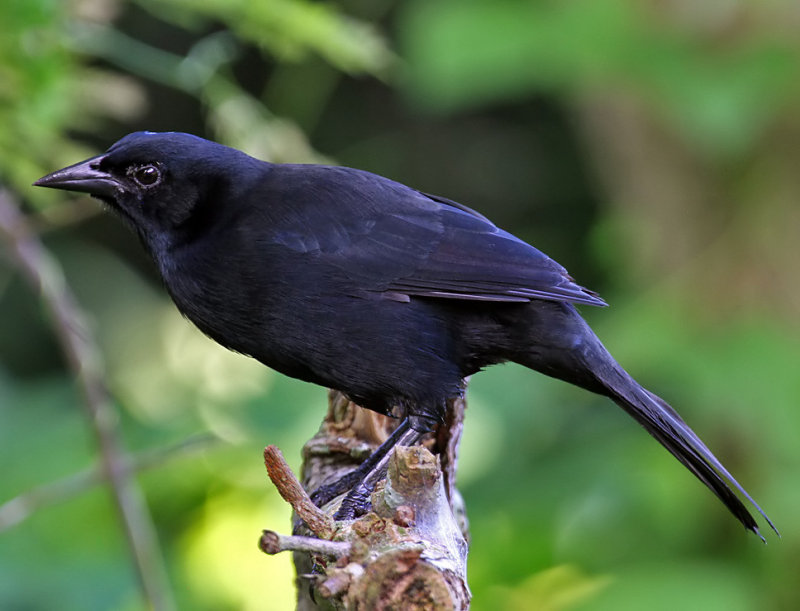
Dives dives
TAXONOMY
Icterus dives W. Deppe, 1830, Oaxaca, Mexico.
OTHER COMMON NAMES
English: Scrub blackbird; French: Quiscale chanteur; German:
Trauerstдrling, Buschstдrling; Spanish: Tordo Cantor.
PHYSICAL CHARACTERISTICS
9–11.5 in (23–29 cm); 2.9–3.6 oz (83.5–102 g); females somewhat
smaller than males. Sexes similar in color. Entirely black,
showing slight iridescence, with a black eye, and moderately
long tail. Juveniles are brownish black, and lack iridescence.
DISTRIBUTION
Resident from central Mexico south to northern Costa Rica.
HABITAT
Tropical lowland forests, secondary forests, pine forests, edge,
and settled areas, from sea level to 6,600 ft (2,000 m).
BEHAVIOR
Pairs are territorial, and individuals of both sexes defend their
territories with songs and displays (tail-flicking and a fluttering
“bill-up” flight). In winter, pairs may gather into small groups,
flocking sometimes with grackles and cowbirds. Sometimes
roosts in dense cane with other blackbirds.
FEEDING ECOLOGY AND DIET
Forages mainly on the ground, commonly on lawns and other
cleared areas. When foraging in trees, they pick insects and
larvae from foliage, and drink nectar from flowers. Their diet
consists of seeds, fruits, nectar, and invertebrates (especially
insects).
REPRODUCTIVE BIOLOGY
Monogamous. The nest is an open cup placed in a bush or
tree; both sexes assist in building the nest. Three to four eggs
are laid in April–July. Incubation about 14 days; information
on fledging not available. Single brooded.
CONSERVATION STATUS
Not threatened. Common, and expanding its range southward
into the Pacific slope of Guatemala, El Salvador, and northern
Costa Rica, probably as a consequence of clearing of land for
agriculture.
SIGNIFICANCE TO HUMANS
They eat the ripening ears of maize, and are considered to be
agricultural pests.
Other popular Animals
Photo Gallery of - Melodious blackbird




 Animalia Life
Animalia Life